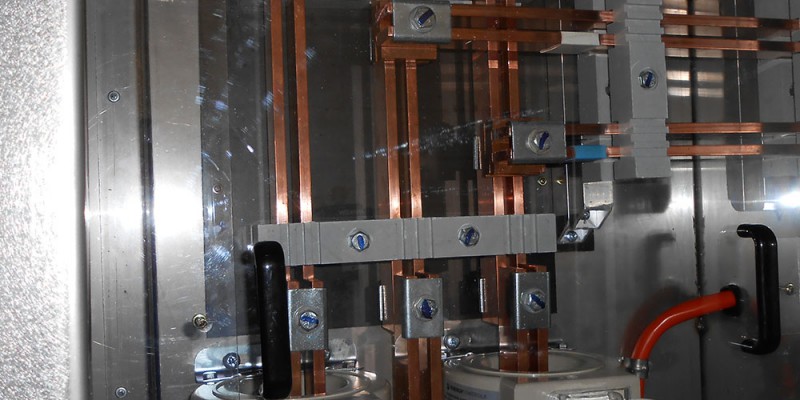A busbar is a conductive metal bar used in switchboards and electrical distribution systems to distribute electrical power from one source to multiple circuits or loads. It is a common connection point for electrical conductors, allowing for efficient and organised power distribution within a switchboard.
What is a busbar and what function does it serve in a switchboard?
Construction and Design:
Material: Busbars are typically made of copper or aluminium due to their excellent electrical conductivity and mechanical properties. Copper is preferred for its superior conductivity, while aluminium is chosen for its lighter weight and cost-effectiveness.
Shape and Size: Busbars can vary in shape and size depending on the current carrying capacity and specific application requirements. They are often flat bars with rectangular or rounded cross-sections.
Functionality:
Power Distribution: The primary function of a busbar in a switchboard is to distribute electrical power from a main source (such as a transformer or generator) to multiple branch circuits or electrical loads.
Connection Point: Busbars serve as connection points for incoming and outgoing electrical conductors, including cables, wires, circuit breakers, switches, and other components within the switchboard.
Current Carrying Capacity: Busbars are designed to handle high currents safely and efficiently, minimising voltage drops and heat generation during power distribution.
Advantages:
Efficiency: Busbars provide a highly efficient method of power distribution compared to individual wiring for each circuit. They reduce wiring complexity, save space, and improve the overall organization of electrical connections within the switchboard.
Flexibility: Busbars offer flexibility in adding or modifying circuits within the switchboard. New circuits or components can easily connect to the busbar without extensive rewiring.
Maintenance: Busbars simplify maintenance and troublesome tasks by providing easy access to electrical connections and facilitating quick identification of circuits.
Types of Busbars:
Main Busbars: These busbars carry power from the main source to distribution points within the switchboard.
Distribution Busbars: These busbars branch off from the main busbars to distribute power to individual circuits or sections of the switchboard.
Earth (Ground) Busbars: Dedicated busbars for grounding conductors to ensure electrical safety and proper grounding of the switchboard.
In summary, busbars are crucial in efficiently distributing electrical power throughout switchboards, as they provide connection points for electrical conductors, and improve the overall functionality and organisation of electrical systems. It is an essential component that enhances switchboards and electrical installations’ reliability, safety, and performance.

